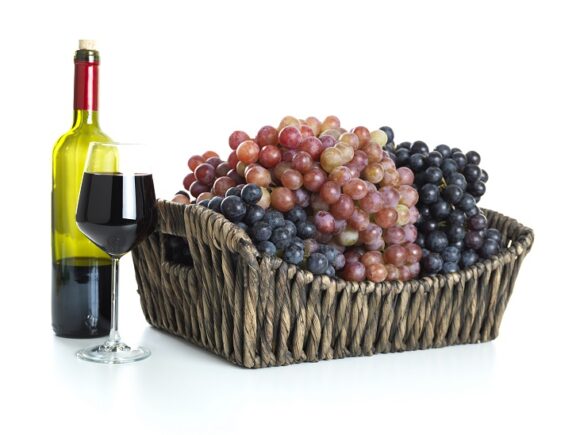 By Gary Pavlis, Ph.D., Agriculture & Natural Resources County Agent, Rutgers Cooperative Extension of Atlantic County.
By Gary Pavlis, Ph.D., Agriculture & Natural Resources County Agent, Rutgers Cooperative Extension of Atlantic County.
National Wine Day is celebrated each year on May 25, and in New Jersey, this is a good way to start off the summer season by recognizing how Jersey wines can be part of special celebrations and everyday enjoyment, not only all summer, but all year long. Whether you will be attending or hosting graduation parties, weddings, showers, picnics or barbeques, New Jersey wines make for great gift giving or serving to guests.
As the county agricultural agent for Rutgers Cooperative Extension of Atlantic County for the past 38 years, I have been working with the wineries in New Jersey for a long time and have witnessed their evolution to producing great wines. Yes, great wines. I know that most Americans believe that wine is only made in California, but New Jersey was actually making wine and winning awards before California even had wineries.
It should be recognized that New Jersey has a long history of wine making. In 1767 the Royal Academy in Great Britain awarded two wines produced in New Jersey their highest award as the best wines produced in the New World. This was the beginning of the New Jersey wine industry. Of course, Prohibition from 1920–1933 curtailed industry growth, and it didn’t really get revitalized until the Farm Winery Act was passed in 1981. We had seven wineries then, but we now have over fifty with a few more in the planning stages. In fact, the wine industry is the fastest growing segment of agriculture in New Jersey, by far. That is great news for all of us because great wine is being made and it makes for great gift giving. (By the way, you can find the top wines from the 2021 New Jersey Wine Competition at www.newjerseywines.com.)
One of the great things about the New Jersey wine industry is the diversity of wines produced. Crisp whites, lush and fruity reds, gorgeous fruit wines, rich ports, and beautiful dessert wines are all offered by New Jersey’s wineries. And because of the diversity of soils and climate in this state, the wines produced reflect those differences. In fact, a survey conducted by Rutgers University revealed that there are eighty-two grape varieties being grown in this state.
Most wineries do not expect to find a perfect grape to make one and only one wine. They have found that producing a range of wines is very consumer-friendly. Many also produce fruit wines made from blueberries, cranberries, or various other fruits. Some consumers may confuse this fruit wine production with the inability to produce a quality dry wine. Quite the contrary—the production of the one does not diminish the production of the other. In fact, we make some of the best fruit wines in the country. Try a New Jersey blueberry wine with cheesecake for dessert and you will know what great food and wine matching is all about.
As you travel from the vineyards of Sussex County in the north to those in Cape May County in the south, the grape varieties change with the climate. In the north, it is cooler and so grapes such as Riesling and Pinot Noir are doing very well. In the south, the hot weather grapes are their forté. Cabernet Sauvignon, Cabernet franc, Merlot, and even some Italian varieties such as Sangiovese and Nebbiolo are thriving. Chardonnay seems to do well throughout the state as does Chambourcin which is a red hybrid grape, originally bred in France in the 1800’s. It produces a lush, fruity red wine I especially love with burgers.
Another option for gifts for special occasions is the gift of winery event reservations. Find winery events, wine trails and festivals at The Garden State Wine Growers Association – GSWGA).New Jersey wines routinely win top honors in national competitions, even beating the likes of California wines. So, I challenge the reader to go out and experience the passion that is the New Jersey wine industry. What you will find is a wide range of wine types and styles, and wines that will satisfy the tastes of just about any wine drinker. Gifting New Jersey wines is a great idea this summer season.
This article originally appeared in the December 2020 issue of Gardener News and has been updated.

